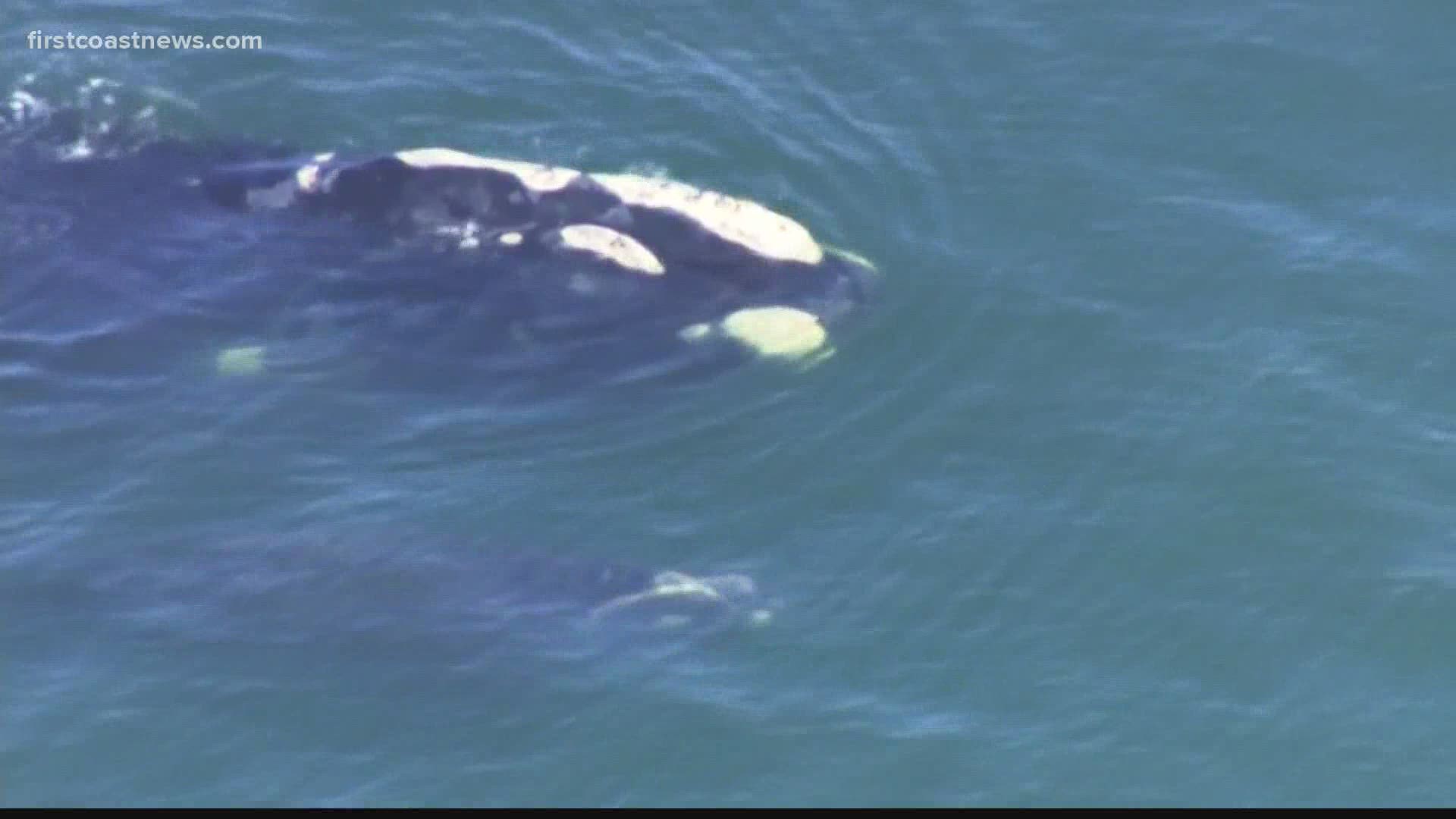JACKSONVILLE, Fla. — If you’re lucky, you might see a right whale from right here on the First Coast. But that might take just a bit more luck in the future, as a major conservancy is now pegging the right whale – which can reach 50 feet and more than 70 tons - a major step closer to extinction.
“When you can see something you tend to protect it more,” Fernandina Beach Mayor Johnny Miller said in an interview Monday with First Coast News.
Miller said spotting a right whale, as he has done from the beaches of Amelia Island and in his younger days as a Navy submarine hunter, is a “life-changing” experience.
“We have a very special connection here in Fernandina Beach and up and down the First Coast, because this is where they come to birth,” he said.
So, it’s catching his attention that the International Union for the Conservation of Nature, one of the world’s premier environmental watchdogs, re-classified the North Atlantic right whale from “endangered” to “critically endangered.
“A couple of years ago we had an estimate of 500-and-some, and now we’re down to 400-and-some [right whales],” Jim Hain of the Marineland Right Whale Project said.
That’s the total known to exist.
As concerned as he was though, Hain seemed to bristle at the notion that the more urgent new classification would make a difference in and of itself.
“We need to see some kind of measurable results toward recovering and protecting these right whales,” Hain said.
Experts agree the most common direct human-cause of injuries or deaths to right whales is fishing line entanglement or boat/propeller strikes.
“With ropeless fishing gear and trying to reduce the impacts of fishing on right whales,” Hain said with cautious optimism, “I think within the next few years you’re going to see some advances.”
Coincidentally or not, the IUCN’s re-classification of right whales comes barely more than a month after President Donald Trump lifted restrictions on commercial fishing at the Northeast Canyons & Seamounts Marine National Monument, which was created under the Obama administration and is the first United States national marine monument in the Atlantic Ocean. It’s also in a region off Cape Cod and the mid-Atlantic states, where right whales are known to feed in summer.
Right whales got their name because hundreds of years ago, whalers considered the species the “right” one to hunt.
“They hug the coastline, they’re in close and they’re easy to get to,” Miller said, explaining the ease with which
hunters were able to capture the monolithic beasts – adults can surpass 50 feet and 70 tons – for their blubber and oil.
“They also are slow moving, they spend a lot of time at the surface, and they float when they die.”
And now, both men say, right whale births are not keeping up with deaths overall. Hain counted ten calf births in the most recent season and at least two calf deaths caused by boat strikes. The National Oceanic and Atmospheric Administration has tallied 12 births and 30 deaths since 2017, and says fewer than 100 breeding females remain.
Like Hain, Miller was willing to offer hope.
“We could literally be the generation that saves the right whale.”
But he packaged that hope alongside a cautionary warning.
“I think morally it would affect us,” Miller said of the species disappearing. “If right whales go extinct in my lifetime, I don’t know how I would live with that.”
Hain urged that people interested in becoming involved can learn more by visiting this website.
To learn more about the North Atlantic right whale, click here.

